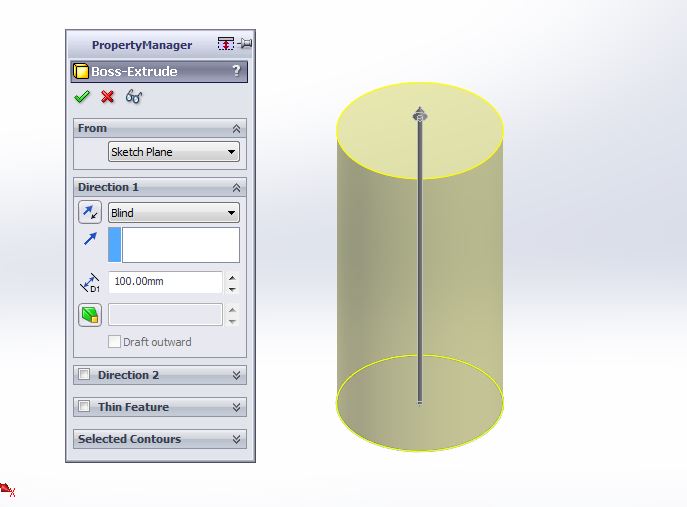If a hose filling up a cylindrical pool with a radius of 5 ft at 28 cubic feet per minute, how fast is the depth of the pool water increasing?
2 Answers
I got about
To solve this, it's best to get organized and see what information you have.
You have these numbers at your disposal:
#r = "5 ft"# , the radius of the cylindrical pool#(dV)/(dt) = ("28 ft"^3)/"min"# , the change in volume of water over time#(dh)/(dt) = ???# , your goal: the change in height of the water over time
If you don't recall the equation for the volume of a cylinder, you can start from the area of a circle and derive it.
#A = A(r) = pir^2#
The volume of a cylinder is gotten by extruding a circle at constant radius so that it has a height.

Hence, what we have for the volume of a cylinder is
#\mathbf(V = pir^2h),#
where
At this point, we have an equation that relates the volume to the height, and we have to solve for the change in height over time,
Next, we know that
That means:
#\mathbf((dV)/(dt)) = (dV(h(t)))/(dt) = \mathbf((d)/(dh)[color(green)(V(h))]*stackrel("Chain Rule")stackrel("result")overbrace((dh)/(dt)))#
So by using the
- The implicit dependency of the change in volume on the height.
- The implicit dependency of the change in height on the time.
To find
#(dV(h))/(dt)#
#= d/(dh)stackrel(color(green)(V(h)))overbrace([pir^2h])*(dh)/(dt)#
#= stackrel("constant")overbrace(pir^2)d/(dh)[h] (dh)/(dt) = pir^2*1*(dh)/(dt)#
#= pir^2(dh)/(dt),#
which gives us the implicit change in height over time. Therefore:
#color(blue)((dh)/(dt))#
#= 1/(pir^2)(dV(h))/(dt)#
#= 1/(pi*("5" cancel("ft"))^cancel(2)) xx ("28 ft"^(cancel(3)^(1)))/"min"#
#= color(blue)((28)/(25pi) "ft/min" ~~ "0.357 ft/min")#
Explanation:
Rate at which hose fills up the cylindrical pool
Volume of the pool if water filled up to depth
Where
Given volume of water filled per minute
Equating the two.
Where
Inserting given values and solving for

